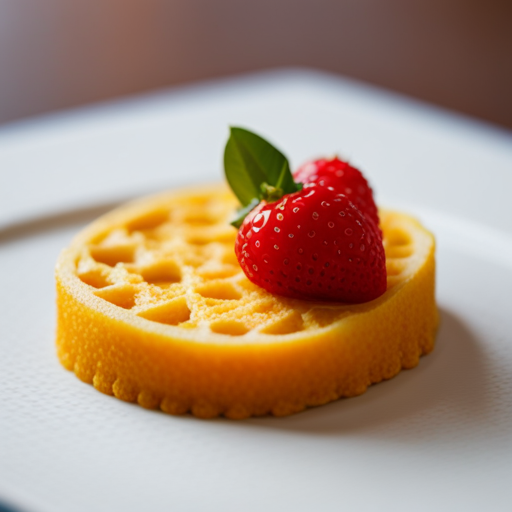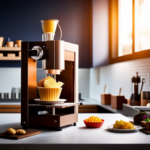In the evolving landscape of culinary technology, the mastery of texture in 3D printed foods is a pivotal area of exploration. This article delves into the intricate nuances of achieving and optimizing texture in 3D printed edibles.
From understanding the fundamental importance of texture to exploring innovative techniques for modification, this analytical piece offers a comprehensive overview of the technical considerations and advancements in the realm of texture manipulation for culinary applications.
Understanding the Importance of Texture
In the context of 3D printed foods, understanding the importance of texture is crucial for achieving sensory satisfaction and acceptance by consumers. Texture perception plays a pivotal role in the overall sensory evaluation of food products. When it comes to 3D printed foods, the texture is not just a matter of mouthfeel, but also a visual and auditory experience. The texture of food significantly influences consumers’ perception of the product’s quality and their likelihood of repurchase.
Sensory evaluation of 3D printed foods involves the assessment of various textural attributes such as hardness, cohesiveness, adhesiveness, springiness, and chewiness. These attributes are critical in determining the overall eating experience. Therefore, in the realm of 3D printed foods, achieving the desired texture is a complex process that necessitates a thorough understanding of the interplay between ingredient composition, printing parameters, and post-processing techniques.
Furthermore, the ability to replicate the textures of conventional foods using 3D printing technology is a key factor in consumer acceptance and market success. Hence, a comprehensive comprehension of texture perception and sensory evaluation is imperative for the advancement and widespread adoption of 3D printed foods.
Factors Influencing Texture in 3D Printing
Achieving the desired texture in 3D printed foods necessitates a comprehensive understanding of the interplay between ingredient composition, printing parameters, and post-processing techniques, as these factors markedly influence the sensory attributes of the final product.
Factors influencing texture in 3D printing include the rheological properties of the food material, which affect its flow behavior during printing. Additionally, the nozzle diameter, layer height, and printing speed directly impact the layer adhesion and surface roughness, consequently influencing the overall texture.
The choice of ingredients, such as different types of starches, proteins, and fats, also plays a critical role in determining the texture of the printed food, as these components contribute to the structural and mouthfeel attributes.
Furthermore, post-processing techniques, such as thermal treatment and surface finishing, can significantly alter the texture of 3D printed foods. Understanding these factors is essential for optimizing texture in 3D printed foods for various culinary applications, ranging from creating customized dishes for specific dietary needs to producing novel gastronomic experiences.
Techniques for Achieving Desired Texture
To achieve the desired texture in 3D printed foods, employing precise control over printing parameters and post-processing techniques is essential.
Texture modification in 3D printed foods is a complex process that requires careful consideration of various factors. One technique for achieving the desired texture is through the manipulation of printing parameters such as layer height, infill density, and printing speed. These parameters can significantly affect the final texture of the printed food product.
Additionally, post-processing techniques such as thermal treatment, mechanical manipulation, and surface finishing can also be employed to further refine the texture of 3D printed foods. It is important to note that the desired texture is not only determined by the physical properties of the printed material but also by sensory perception. Therefore, techniques for achieving the desired texture must take into account the sensory aspects of the final food product, including aspects such as mouthfeel and overall eating experience.
By carefully considering and controlling these factors, it is possible to achieve the desired texture in 3D printed foods.
Transitioning into the subsequent section about ‘innovations in texture modification’, advancements in texture modification techniques continue to redefine the possibilities for creating unique and appealing textures in 3D printed foods.
Innovations in Texture Modification
One essential aspect of advancing texture modification in 3D printed foods involves exploring innovative techniques that further refine the sensory and physical properties of the final food products.
The innovations in texture modification encompass a broad spectrum of advancements, including texture customization and manipulation of material properties.
Texture customization focuses on tailoring the structural composition of the printed food to achieve specific mouthfeel, consistency, and overall eating experience. This can be achieved through precise control of layering, density, and porosity within the printed food matrix, allowing for the creation of varying textures ranging from soft and smooth to firm and crunchy.
Furthermore, innovations in material properties involve the development of novel food-based materials with customizable rheological and mechanical properties, enabling the creation of a wider range of textures in 3D printed foods.
Texture Optimization for Culinary Applications
When optimizing texture for culinary applications in 3D printed foods, it is essential to consider the specific requirements of the intended dining experience and the desired sensory attributes. Culinary creativity plays a vital role in achieving the desired texture, as it directly impacts the overall sensory experience.
To optimize texture for culinary applications effectively, several key considerations should be taken into account:
-
Material Selection: Choosing the right ingredients to 3D print with is crucial. For instance, using hydrocolloids can create textures ranging from soft and creamy to firm and elastic, allowing for a wide range of culinary applications.
-
Imagery: Imagine a velvety smooth chocolate mousse or a perfectly textured steak, both created using the appropriate material selection.
-
Layering Techniques: Implementing precise layering techniques can result in a variety of textures within a single 3D printed food item, enhancing the culinary creativity and providing a multi-dimensional sensory experience.
-
Imagery: Picture a layered dessert with a combination of crunchy, creamy, and airy textures, all achieved through meticulous layering techniques.
Frequently Asked Questions
Can 3D Printed Foods Have the Same Texture as Traditional Foods?
Achieving comparable texture in 3D printed foods to traditional ones is a challenge. Texture innovation is crucial for replicating the authentic culinary experience. Advanced material science and precise printing techniques are key in meeting this demand.
What Are the Potential Health Benefits of Modifying Texture in 3D Printed Foods?
Modifying texture in 3D printed foods can offer potential health benefits by catering to customized diets and meeting specific nutritional requirements. This can enhance the overall dining experience and promote better nutrient absorption.
How Does the Texture of 3D Printed Foods Affect the Overall Dining Experience?
Texture customization in 3D printed foods directly influences sensory perception and the overall dining experience. It affects mouthfeel, flavor release, and aesthetics, playing a crucial role in consumer acceptance and satisfaction. Understanding these effects is vital for enhancing food printing technology.
Are There Any Ethical Considerations Related to Modifying Texture in 3D Printed Foods?
Ethical considerations in modifying texture for 3D printed foods are critical. Altering texture affects consumer perception, raising questions about transparency and informed consent. Balancing innovation with consumer well-being requires careful navigation of these ethical complexities.
Can 3D Printed Foods Be Tailored to Meet Specific Dietary Requirements Based on Texture?
3D printed foods can be tailored to meet specific dietary requirements based on texture, akin to crafting personalized garments. Texture modification in 3D printing allows for customized diets, catering to various dietary restrictions with precision.
Conclusion
In conclusion, the mastery of texture in 3D printed foods is a complex and evolving field, with numerous factors influencing the final product.
While techniques for achieving desired texture continue to advance, the optimization of texture for culinary applications remains a challenging endeavor.
As the pursuit of perfect texture in 3D printed foods continues, the irony lies in the ever-elusive nature of achieving a truly authentic and natural texture in these artificial creations.


